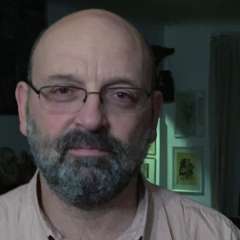More than a decade after the first performance, Mark Morris' mise en scène for Gluck's 1762 Orfeo ed Euridice remains – with its non-ostentatious modernism – one of his most memorable creations, even if it can’t be mentioned in the same breath as two other Baroque-anchored masterpieces – Handel’s L’Allegro, il Penseroso ed il Moderato and Purcell’s Dido and Aeneas – conceived earlier in his career.
Baroque spectacles have been envisaged as balanced mélanges between singing and dancing and there is no one today that compares to Morris in terms of his gift for making a modern choreographic idiom and centuries-old music live together. A believer in the “prima la musica” dictum, he would come up – in response to music that excites him – with bewilderingly innovative, simple but subtle, individual or collective, chains of movements. At the same time, Mark Morris is also able to draw attention – via his choreography – to subcurrents in the score that we wouldn't otherwise resonate with. His Orfeo is as good an example as any in this sense, especially in the series of dances, with movements combining staccato and legato patterns, that conclude the performance. The gestures of the modern-dressed dancers – mostly recruited among the veterans of the Mark Morris Dance Group – and chorus members could seem schematic, particularly in the initial, mourning scenes. However, at no point are dance and choral music treated as separated diversions; all elements sustaining the drama are integrated, as Gluck and his librettist, Ranieri de Calzabigi, had intended when they created this revolutionary opus.
Morris treats all aspects of his staging with wit and a healthy dose of “post-modern”, ironic detachment. It doesn’t only apply to the dancers’ shrugs and signs or to the singers’ grimaces (handling daggers or not) but extends to the work of his collaborators. Costume designer Isaac Mizrahi fully dressed Orfeo in black, making him look like a guitar-slinging Johnny Cash. A literally deus ex machina Amore is adorned with sneakers. Choristers are garbed as historical characters – from Cleopatra to Henry VIII to Lincoln to Mahatma Gandhi – witnessing the action from a pair of three-tiered quarter-circle structures, referring to either a stadium or a Daumieresque tribunal. The back of Allen Moyer’s rotating set is some sort of a black “lava tube”, representing the ascending passage from the Inferno, where the main drama of the opera takes place. Euridice’s body, draped in a white mousseline dress, is here carried back and forth like a huge marionette by a group of four bunraku-evoking underworld assistants.
English conductor Mark Wigglesworth easily kept singers, dancers and the orchestra fully synchronized, and the colors he elicited from the modern-instrument Metropolitan Orchestra were sufficiently varied. Nonetheless, the ensemble sounded many a times unfocused. The instrumentalists seemed uncomfortable interpreting a score that doesn’t fit well with their day-to-day repertoire. The members of the chorus – incarnating in turn mourners, furies or spirits of Elysium – seemed more confident.
There are just three characters in this opera distilled to its essence. The 1762 version centers around Orfeo’s plight. Euridice’s role was only fleshed out in the later, French, variant. In her limited time on stage, soprano Hei-Kyung Hong sang with the same stylized elegance that she brought year after year to her Mozart interpretations, even if her pitch wasn’t as well-defined as it used to be. The smallish role of Amore was rendered with charm, exuberance and aplomb by the young soprano Hera Hyesang Park. Listening to her “Gli sguardi trattieni” was a pure joy. Conceived for Lorraine Hunt-Lieberson before her untimely death, portrayed at the premiere by counter-tenor David Daniels, the main role in this revival has been given to the versatile mezzo-soprano Jamie Barton, whose rich, mellifluous voice is ideal for this music. From the three initial cries to the rendering of “Che faro senza Euridice?”, she filled the Metropolitan Opera House with the sound of her glorious instrument. However, Barton somehow seemed to be holding back from conveying Orfeo’s anguish and despair when bemoaning his cruel fate. Was the de-emphasized pathos her choice or was she responding to the indications of a director who claimed in the very recently published Out Loud – a memoir Mark Morris wrote together with Wesley Stace – that he “doesn’t want to see someone pour it all out”?




